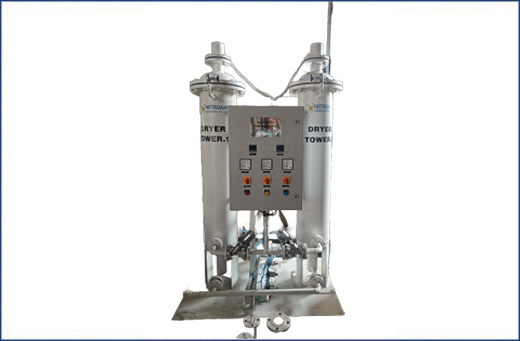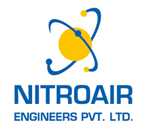Call Anytime
-
-
Send Email
sales@nitroairengineers.com
Air Dryers

Air Dryer
Air dryers are devices used to remove moisture or humidity from the air. They are commonly used in various applications to prevent the buildup of moisture and protect equipment, maintain product quality, and create a more comfortable environment.
A desiccant air dryer uses a drying agent, known as a desiccant, to adsorb or absorb moisture from the compressed air. The most commonly used desiccants are silica gel and activated alumina. The process typically involves two towers or chambers filled with the desiccant material.
Common types of Air Dryers:
Refrigerated Air Dryers: These dryers work by cooling the air to a temperature where moisture condenses, and then the condensed moisture is separated and drained away. They are commonly used in compressed air systems to remove moisture and reduce the dew point.
Desiccant Air Dryers: Desiccant dryers use a desiccant material (such as silica gel or activated alumina) to adsorb moisture from the air. The moist air passes through the desiccant bed, and the moisture is trapped, leaving the air dry. Desiccant dryers are often used in applications where extremely dry air is required, such as in laboratories or sensitive manufacturing processes.
Membrane Air Dryers: These dryers use a selectively permeable membrane to remove moisture from the air. The membrane allows water vapor to pass through while blocking other gases and contaminants. Membrane dryers are compact and require no power source, making them suitable for small-scale applications or remote locations.
Heatless Air Dryers: Heatless dryers use compressed air to regenerate the desiccant material. They work in cycles, with one tower adsorbing moisture while the other regenerates. Heatless dryers are energy-efficient but may have higher air loss during the regeneration process.
Heat-Regenerative Air Dryers: These dryers use heat to regenerate the desiccant material. They typically employ heaters or external heat sources to remove moisture from the desiccant and then cool the air before it enters the system. Heat-regenerative dryers are efficient and can provide a continuous flow of dry air.
The choice of air dryer depends on factors such as the required level of dryness, the volume of air to be dried, the application, and the available resources. It's essential to select the appropriate type of air dryer to ensure optimal performance and efficiency.
